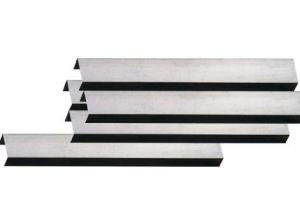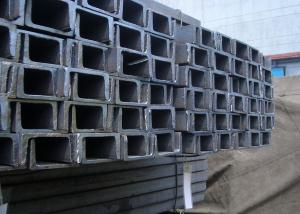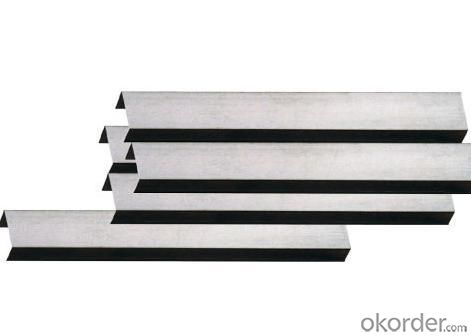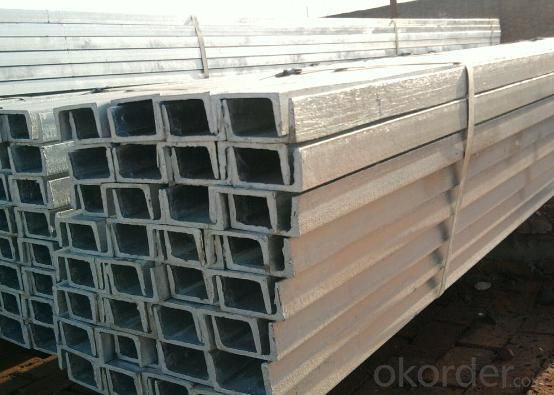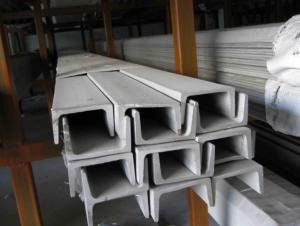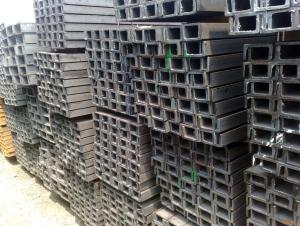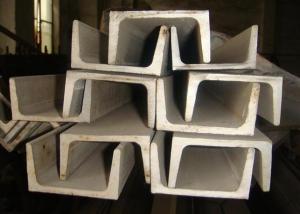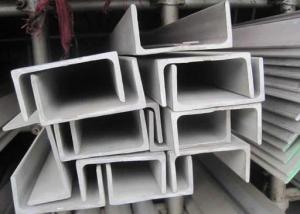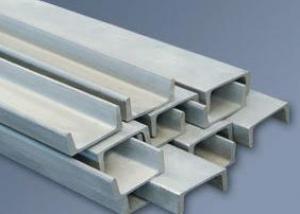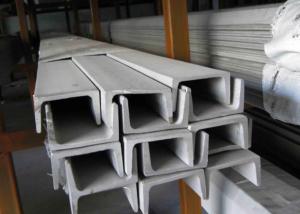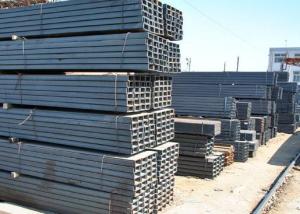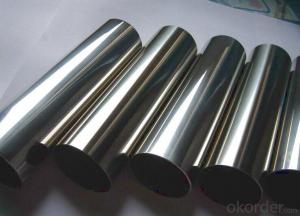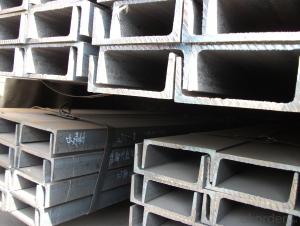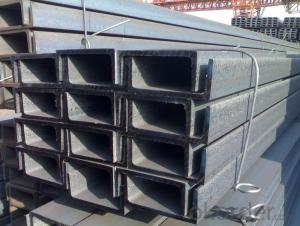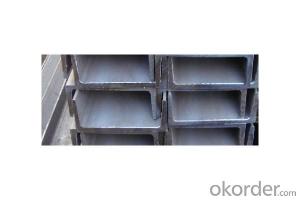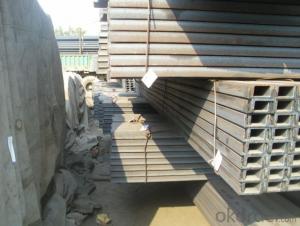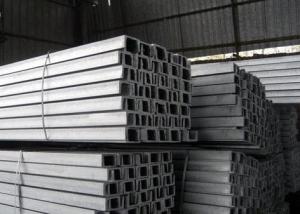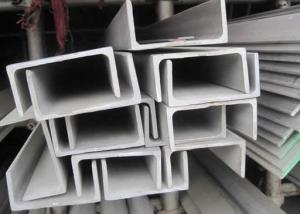Hot Rolled Stainless Steel Channels
- Loading Port:
- China Main Port
- Payment Terms:
- TT or LC
- Min Order Qty:
- 5 Tons m.t.
- Supply Capability:
- 1000 Tons Per Month m.t./month
OKorder Service Pledge
OKorder Financial Service
You Might Also Like
Stainless Steel Channel
1.Size: 3mm to 24mm Thickness
2.Material:SUS201,202,301,304,304L,316,316L ,321 etc.
3.Length: 4m to 6m,or according to the customer's requirement
4.Standard: AISI,JIS,GB,DIN
5.Finish: Cold Drawn ,hot rolled & Polishing
6.Testing: Each heat number and batch must be tested for both chemical and mechanical properties
7.Application: Produce screw and nut, engine parts, indoor and outdoor decorating,etc.
|
Size (mm) |
Thickness (mm) | ||||||||
|
H×B |
3 |
4 |
5 |
6 |
7 |
8 |
9 |
10 |
12 |
|
Mass (Kg/m) | |||||||||
|
40×20 |
1.79 |
|
|
|
|
|
|
|
|
|
50×25 |
2.27 |
|
|
|
|
|
|
|
|
|
60×30 |
2.74 |
3.56 |
4.37 |
5.12 |
|
|
|
|
|
|
70×35 |
3.23 |
4.21 |
5.17 |
6.08 |
|
|
|
|
|
|
80×40 |
3.71 |
4.84 |
5.96 |
7.03 |
|
|
|
|
|
|
90×45 |
4.25 |
5.55 |
6.83 |
8.05 |
|
|
|
|
|
|
100×50 |
4.73 |
6.18 |
7.62 |
8.98 |
10.3 |
11.7 |
13 |
41.2 |
|
|
120×60 |
|
|
9.2 |
10.9 |
12.6 |
14.2 |
|
|
|
|
130×65 |
|
|
10.1 |
11.9 |
13.8 |
15.5 |
17.3 |
19.1 |
|
|
140×70 |
|
|
|
12.9 |
14.9 |
16.8 |
18.8 |
20.7 |
|
|
150×75 |
|
|
|
13.9 |
16 |
18.1 |
20.2 |
22.2 |
26.3 |
|
160×80 |
|
|
|
14.8 |
17.1 |
19.3 |
21.6 |
23.8 |
28.1 |
|
180×90 |
|
|
|
16.7 |
19.4 |
22 |
24.5 |
27 |
32 |
|
200×100 |
|
|
|
18.6 |
21.6 |
24.5 |
27.4 |
30.2 |
35.8 |
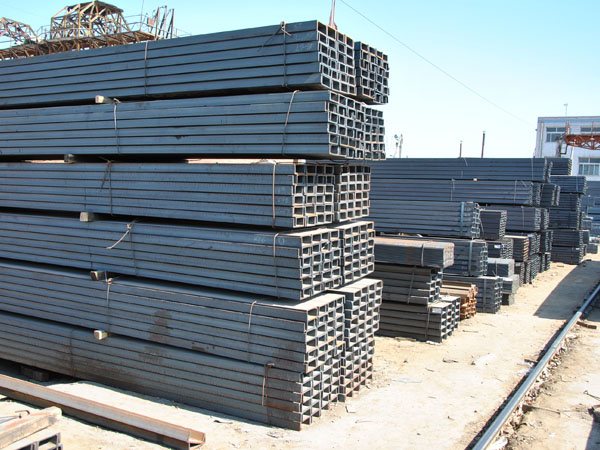
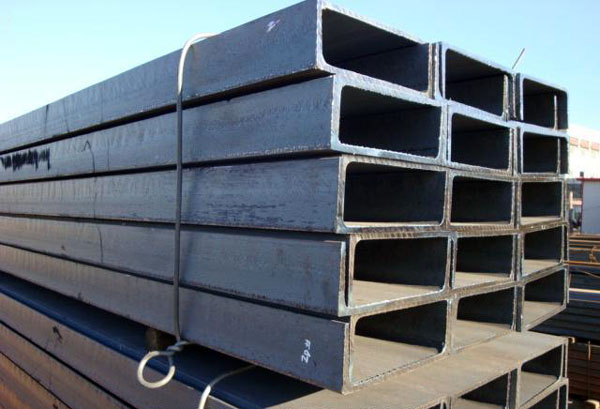
- Q: Can stainless steel channels be used in high-temperature applications?
- Yes, stainless steel channels can be used in high-temperature applications. Stainless steel is known for its excellent heat resistance and can withstand elevated temperatures without losing its strength or structural integrity. This makes stainless steel channels a suitable choice for various high-temperature environments such as furnaces, boilers, and industrial ovens.
- Q: Can stainless steel channels be used in the construction of pharmaceutical plants?
- Yes, stainless steel channels can be used in the construction of pharmaceutical plants. Stainless steel is a highly durable and corrosion-resistant material, making it suitable for environments that require strict cleanliness and hygiene standards, such as pharmaceutical plants. Additionally, stainless steel has excellent mechanical properties and can withstand high temperatures and pressures, making it a reliable choice for various structural applications in pharmaceutical facilities.
- Q: Can stainless steel channels be used for framing stairs or ramps?
- Yes, stainless steel channels can be used for framing stairs or ramps. Stainless steel is a durable and corrosion-resistant material, making it suitable for outdoor applications like stairs and ramps. Stainless steel channels provide structural support and stability, and their sleek and modern appearance adds an aesthetic appeal to the overall design. Additionally, stainless steel is easy to clean and maintain, making it a practical choice for high-traffic areas like stairs and ramps.
- Q: Can stainless steel channels be used for curtain wall supports?
- Yes, stainless steel channels can be used for curtain wall supports. Stainless steel is a durable and corrosion-resistant material, making it suitable for applications that require structural support and longevity. The channels can be designed and manufactured to meet the specific requirements of curtain wall systems, providing strength and stability to the structure. Additionally, stainless steel channels offer aesthetic appeal with their sleek and modern look, making them an ideal choice for curtain wall supports in architectural projects.
- Q: Can stainless steel channels be used for transportation or automotive applications?
- Indeed, transportation or automotive applications can make use of stainless steel channels. Stainless steel is renowned for its ability to resist corrosion, its durability, and its high strength-to-weight ratio, which renders it a fitting material for a range of purposes in the transportation and automotive sector. Stainless steel channels can be employed in the construction of vehicle frames, chassis, suspension systems, and exhaust systems. They supply structural support, ensure stability, and endure the harsh conditions often encountered in transportation and automotive environments. Moreover, stainless steel channels can be easily shaped, welded, and fabricated to meet specific design requirements, thus making them a versatile option for transportation and automotive applications.
- Q: What are the different sizes available for stainless steel channels?
- The different sizes available for stainless steel channels vary depending on the manufacturer and the specific application. Common sizes range from small channels measuring around 1 inch to larger channels that can be several inches wide.
- Q: Can stainless steel channels be used for soundproofing applications?
- Yes, stainless steel channels can be used for soundproofing applications. Stainless steel is known for its excellent corrosion resistance and durability, making it a suitable material for soundproofing purposes. The channels can be used to create barriers or enclosures to minimize the transmission of sound, effectively reducing noise levels in various applications.
- Q: Can stainless steel channels be used in the construction of wastewater treatment facilities?
- Yes, stainless steel channels can be used in the construction of wastewater treatment facilities. Stainless steel is a corrosion-resistant material that is highly suitable for use in environments with high moisture and chemical exposure, making it an ideal choice for wastewater treatment facilities. Stainless steel channels offer excellent durability, strength, and resistance to rust and corrosion, ensuring the longevity and reliability of the infrastructure. Additionally, stainless steel is easy to clean and maintain, which is crucial in wastewater treatment facilities to prevent the buildup of contaminants. Overall, the use of stainless steel channels in the construction of wastewater treatment facilities can contribute to the efficient and effective treatment of wastewater while ensuring the longevity and durability of the infrastructure.
- Q: Can stainless steel channels be used in the construction of gantries?
- Yes, stainless steel channels can be used in the construction of gantries. Stainless steel channels offer high strength and excellent corrosion resistance, making them suitable for outdoor applications. Additionally, stainless steel channels can be easily welded and fabricated to meet the specific requirements of gantry construction.
- Q: How do stainless steel channels perform in fire-resistant applications?
- Stainless steel channels perform exceptionally well in fire-resistant applications due to their high melting point, low thermal conductivity, and excellent structural integrity even at elevated temperatures. They have superior resistance to fire, corrosion, and heat, making them a reliable choice for construction in fire-prone environments.
1. Manufacturer Overview
| Location | Jiangsu, China |
| Year Established | 2010 |
| Annual Output Value | above US$8 million |
| Main Markets | East Asia, Middle East, West Europe |
| Company Certifications |
2. Manufacturer Certificates
| a) Certification Name | |
| Range | |
| Reference | |
| Validity Period |
3. Manufacturer Capability
| a) Trade Capacity | |
| Nearest Port | Shanghai |
| Export Percentage | |
| No.of Employees in Trade Department | above 50 people |
| Language Spoken: | English, Chinese, Arabic |
| b) Factory Information | |
| Factory Size: | about 15000 square meter |
| No. of Production Lines | above 4 |
| Contract Manufacturing | OEM Service Offered,Design Service Offered |
| Product Price Range | Average |
Send your message to us
Hot Rolled Stainless Steel Channels
- Loading Port:
- China Main Port
- Payment Terms:
- TT or LC
- Min Order Qty:
- 5 Tons m.t.
- Supply Capability:
- 1000 Tons Per Month m.t./month
OKorder Service Pledge
OKorder Financial Service
Similar products
Hot products
Hot Searches
Related keywords
